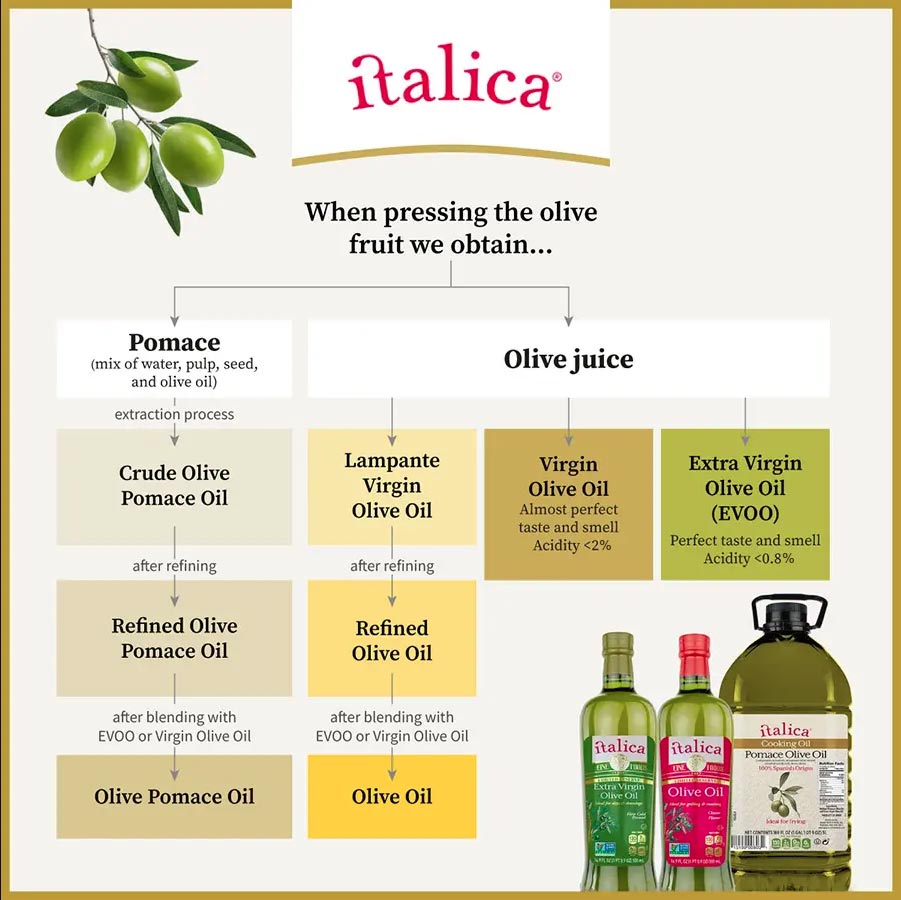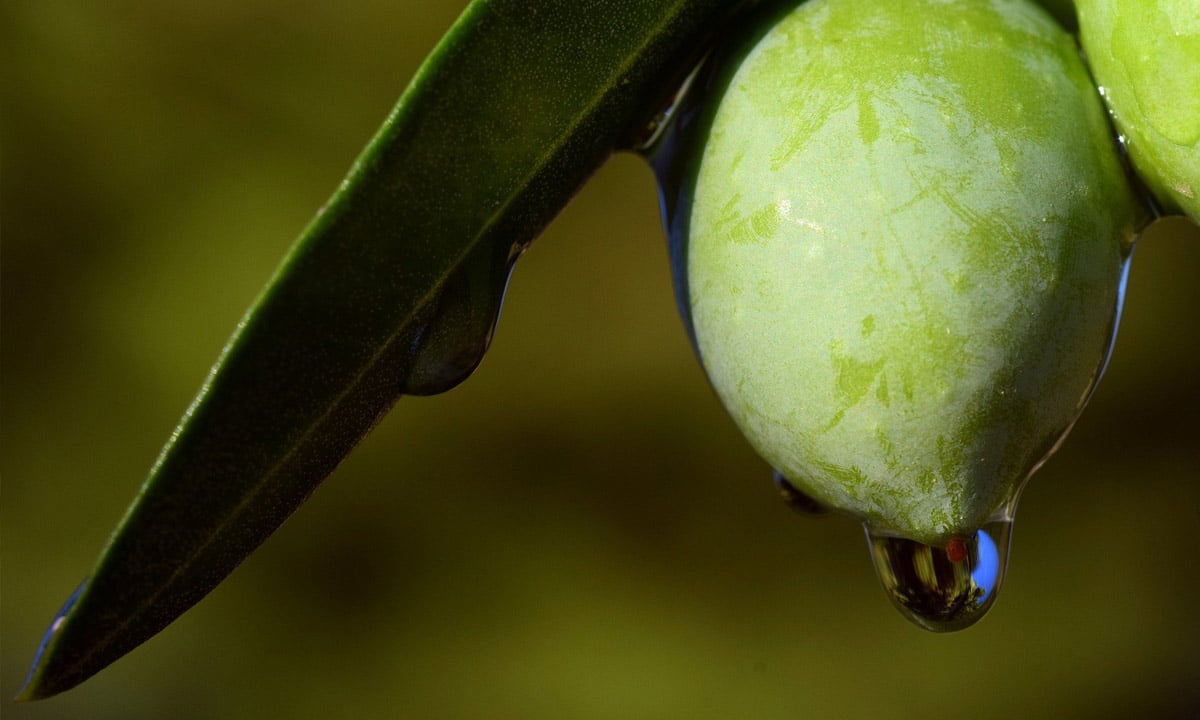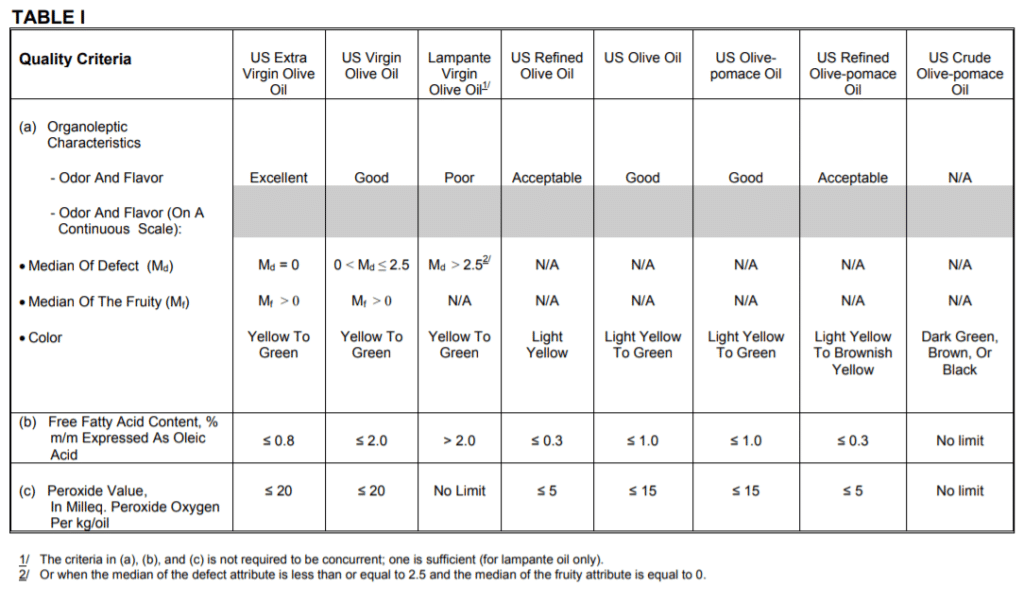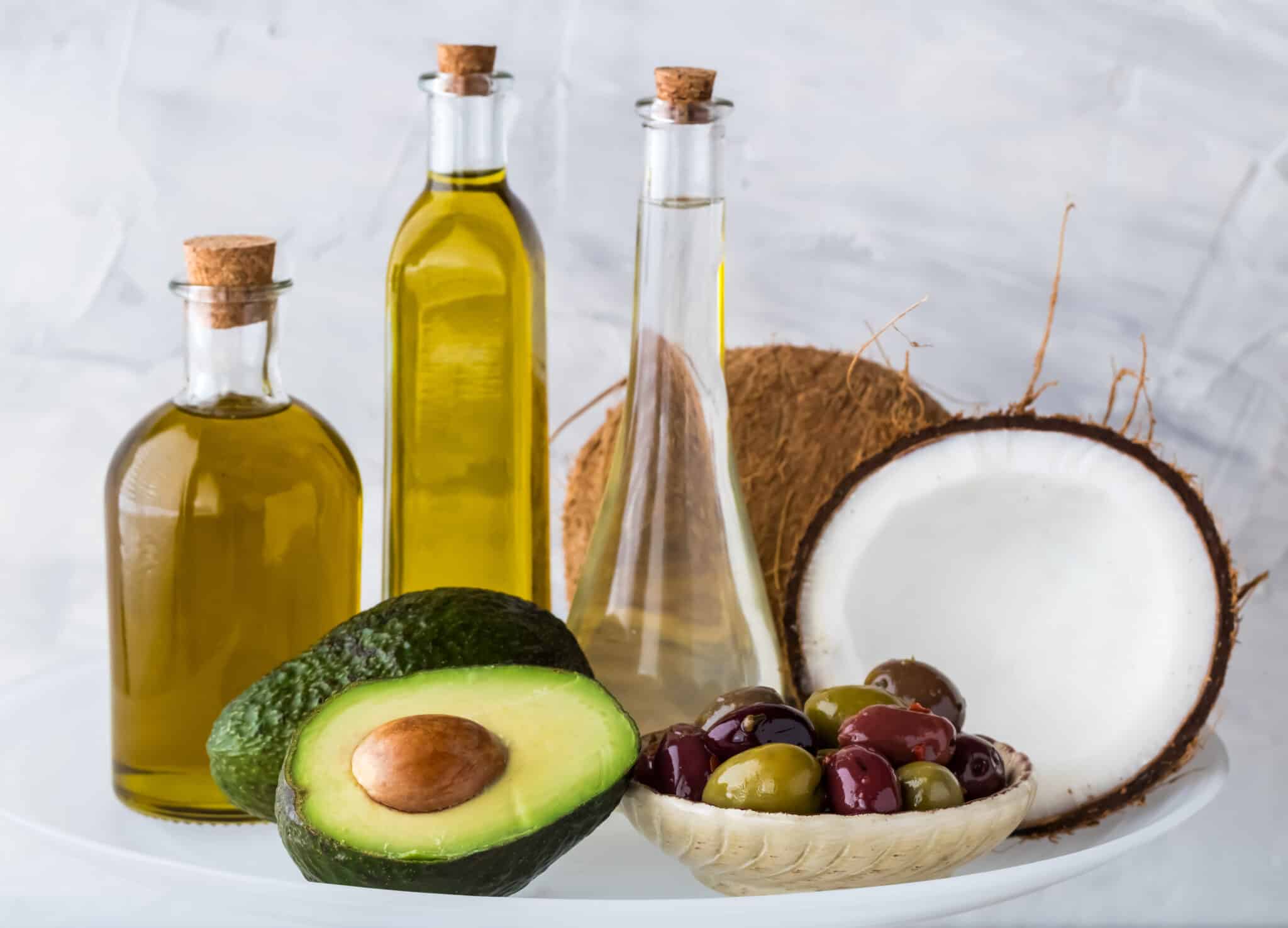The United States Standards for Grades of Olive Oil and Olive-Pomace Oil, issued on October 25, 2010, recognizes eight types of olive oil:
- Extra Virgin Olive Oil (EVOO).
- Virgin Olive Oil (VOO).
- Lampante Virgin Olive Oil.
- Refined Olive Oil.
- Olive Oil.
- Olive-Pomace Oil (also referred to as “Pomace Olive Oil”).
- Refined Olive-Pomace Oil.
- Crude Olive-Pomace Oil.
Of those eight types of olive oil, three of them are virgin, two of them are refined, one is chemically prepared (Crude Olive-Pomace Oil), and two are a mix of the above (Olive Oil and Olive-Pomace Oil). However, olive oil is more commonly divided into five main categories: Extra Virgin Olive Oil, Virgin Olive Oil, Refined Olive Oil, Olive-Pomace Oil, and Lampante Olive Oil.

The International Olive Oil Council (IOOC)’s charter of international standards is the most widely used grading system worldwide. Here in the United States, we have our own grading system. The table below is the first of three sections taken from the United States Standards for Grades of Olive Oil and Olive-Pomace Oil and shows the quality criteria used for grading olive oil.
How is olive oil graded?
Olive oil is categorized or “graded” according to three main criteria:
- Production method: the variety of olive used, the ripeness of the olive, environmental factors such as the type of the soil and weather conditions where the olive is produced, harvesting, pressing techniques, storage methods, and other factors.
- Acidity content: free fatty acid content, glyceridic structure, linolenic acid, and a number of other scientific terms which you can consult in the official standards document listed at the beginning of this post.
- Flavor and aroma: flavor is qualified as anything from “excellent” to “poor” and to most of us non-scientific olive oil consumers is the true defining factor.
Read on to discover some of the general qualities of and uses for the five most common types of olive oil.
Extra Virgin Olive Oil
Of all the types of olive oil, Extra Virgin Olive Oil (EVOO) ranks first in terms of quality. The oil has excellent flavor and aroma, has relatively low free fatty acid content, and its smoke point is one of the lowest at 392° F†/200° C. EVOO is extracted by cold-pressing the olives, allowing to retain most of the natural olive flavor. Other pressing methods usually alter the flavor and aroma after exposing the olives to high temperatures. Extra Virgin Olive Oil is an excellent choice for any type of recipe or seasoning and is the most recommended type of oil for consumption. The oil also presents a range of health benefits.
Virgin Olive Oil
Just like EVOO, Virgin Olive Oil (VOO) is an unrefined type of olive oil and is obtained directly from cold-pressing natural olive oil. None of the virgin types of olive oil contain additives. The only treatment given during the production process is washing, decantation, centrifugation, and filtration. VOO has a milder taste than EVOO but contains slightly higher acidity levels. The oil comes second to EVOO in the olive oil rankings and is most suitable for low-temperature cooking, baking, and can also be used as seasoning.
Lampante Virgin Olive Oil
Most commonly known as Lampante Oil, this type of olive oil is not suitable for human consumption. Its name stems from its original use as fuel for oil lamps. You can find more interesting anecdotes in our previous post on the history of olive oil. Lampante Oil contains high acidity levels and has a fairly unpleasant flavor and aroma. The oil has to go through a refining process in order to produce Refined Olive Oil and be used for cooking.
Refined Olive Oil
Refined Olive Oil has the lowest levels of free fatty acid content and is only suitable for cooking. The refining method applied to one of the virgin olive oils to obtain Refined Olive Oil is meant to prevent altering the initial glyceridic structure of the virgin oil. The oil has a higher smoke point than some of the other olive oils and, blended with EVOO or VOO, produces Classic Olive Oil, also referred to as Pure Olive Oil.
Olive-Pomace Oil
Most types of olive oil are extracted from the natural olive oil and water that is squeezed out of the olive fruit during the pressing process. Olive-Pomace Oil is the only one that is extracted from the residue that remains after the olive fruit is pressed. One of the virgin olive oils needs to be mixed with Olive-Pomace Oil in order to improve its quality. The oil is not suitable for consumption but is ideal for frying.
Subscribe to our newsletter below to receive more related content and updates on Italica’s own brand of oils.






